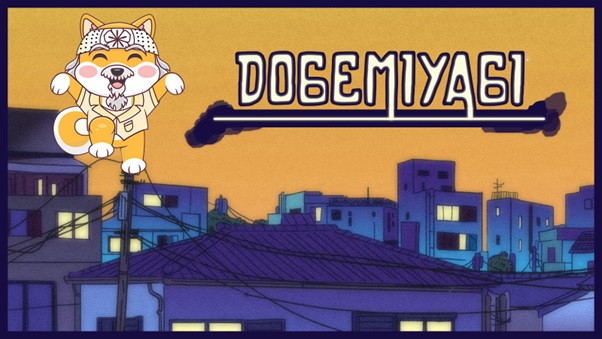
The economic strategies employed by blockchain projects hold substantial sway over the supply and demand dynamics of their tokens. In this article, we will explore the economic policies of DogeMiyagi (MIYAGI), Solana (SOL), and XRP, scrutinising their impact on token supply and demand.
By grasping these policies, we can glean insightful knowledge about the factors that steer token valuation and influence market behaviour. Appreciating the economic frameworks of these projects is of utmost importance to investors and users alike, empowering them to make well-informed choices and navigate the dynamic and ever-evolving cryptocurrency landscape.
Dogemiyagi’s Unique Inflationary Approach
DogeMiyagi (MIYAGI) employs an inflationary economic policy designed to incentivize community involvement and long-term token holding. The token’s supply increases with each transaction, as a portion of the transaction fee is distributed among existing token holders. This mechanism, known as a redistribution feature, rewards holders and encourages them to retain their tokens, thereby reducing sell pressure and promoting price stability. The inflationary nature of Dogemiyagi’s policy ensures a constant supply increase over time, aligning with the project’s goal of creating a sustainable and community-driven ecosystem.

As MIYAGI is still in its presale stage, it holds promising prospects as a lucrative investment opportunity. DogeMiyagi explores the monetization potential through non-fungible tokens (NFTs) and collectibles. By capitalising on the popularity of the meme, DogeMiyagi aims to create and sell NFTs, transforming memes into valuable digital assets. These unique tokens are expected to attract attention and generate revenue for the DogeMiyagi ecosystem. Notably, the project emphasises revenue sharing among the community, ensuring inclusive benefits.
Moreover, DogeMiyagi leverages its brand recognition for merchandise and licensing ventures. The strong appeal of the brand opens doors to collaborations and partnerships, leading to the creation of DogeMiyagi-themed merchandise. By offering licensed products, DogeMiyagi can diversify its revenue streams and solidify its position in the market.
Solana’s Deflationary Tokenomic Model
Solana (SOL) adopts a deflationary economic policy with a fixed maximum supply of 489 million tokens. Unlike DogeMiyagi, where new tokens are constantly minted, Solana’s supply is capped, which creates scarcity and a potential increase in token value over time. Solana’s deflationary model promotes long-term holding and scarcity, leading to a potential increase in demand as more users seek to acquire a limited supply of tokens. This economic policy aligns with Solana’s goal of becoming a scalable and sustainable blockchain platform with a robust ecosystem.
XRP’s Controlled Supply Mechanism
XRP operates on a controlled supply mechanism, with a total supply of 100 billion tokens. However, unlike Solana’s fixed maximum supply, XRP’s supply is predetermined, with a significant portion held by Ripple Labs. This controlled supply approach aims to ensure stability and prevent excessive inflation.
Ripple Labs periodically releases a portion of its XRP holdings, allowing for controlled token circulation. While the controlled supply mechanism may reduce the potential for significant price appreciation, it also provides stability and a predictable token supply, which can be appealing to certain market participants.
Impact On Supply and Demand Dynamics
The economic policies of DogeMiyagi, Solana, and XRP influence the supply and demand dynamics of their tokens in different ways. DogeMiyagi’s inflationary model, with its constant token minting, can potentially lead to an increase in the token supply. However, the redistribution feature incentivizes token holding, reducing sell pressure and promoting price stability. The community-driven nature of DogeMiyagi’s policy encourages engagement and involvement, which can contribute to long-term token demand.

On the other hand, Solana’s deflationary model, with its fixed maximum supply, creates scarcity, potentially driving up demand for the token. The limited supply of Solana tokens aligns with its goal of becoming a valuable and sought-after asset. The scarcity factor, coupled with the platform’s scalability and ecosystem growth, can contribute to increased demand for Solana tokens.
XRP’s controlled supply mechanism ensures stability and controlled token circulation. While this may limit the potential for rapid price appreciation, it also reduces the risk of excessive inflation. The predictable supply of XRP tokens can attract users who value stability and reliability in a digital asset.
Economic policies play a crucial role in shaping the supply and demand dynamics of cryptocurrencies. DogeMiyagi’s inflationary approach rewards token holders and promotes price stability, Solana’s deflationary model creates scarcity and potential value appreciation, and XRP’s controlled supply mechanism ensures stability and predictability. Each project’s economic policy aligns with their respective goals and philosophies. While DogeMiyagi focuses on community involvement and sustainability, Solana aims to establish scarcity and value appreciation, and XRP prioritises stability and controlled supply. Understanding these economic policies helps investors and users evaluate the potential impact on token supply and demand dynamics.
DogeMiyagi:
Website: https://dogemiyagi.com
Twitter: https://twitter.com/_Dogemiyagi_
Telegram: https://t.me/dogemiyagi

